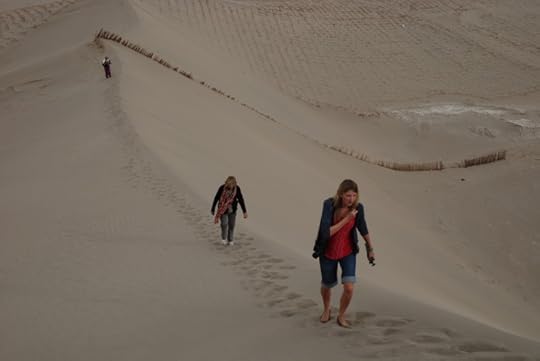A history of firsts [slideshow]
We live in a globalized world, but mobility is nothing new. Set on a huge continental stage, By Steppe, Desert and Ocean tells the story how human society evolved across the Eurasian continent from Europe to China. Covering over 10,000 years, from the origins of farming around 9000 BC to the expansion of the Mongols in the thirteenth century AD, it shows how humankind first started building the globalized world we know today. In the slideshow below, take a look at some of the first developments that demonstrate the inventive and acquisitive nature of humanity.

Horses were trained to pull wheeled vehicles
The earliest horse-drawn chariots were developed around the southern Urals around 2100 BC. Image credit: Family driving to Pedruk. CC BY 2.0 via Wikimedia Commons

The development of cavalry
A group of horsemen working together as a fighting unit began in the Altai-Sayan region of southern Siberia in the century or two after 1000 BC. Cavalry changed the world. It allowed the Mongols led by Chinggis Khan to bring huge tracts of Eurasia from China to the borders of Europe under the control of a single authority. Image credit: Battle between Mongols & Chinese (1211). Public domain, via Wikimedia Commons .

The first use of gunpowder
Gunpowder was perfected in China during the Song dynasty. It was first used in grenades and bombs launched by catapults and featured in the equipment of Chinese military engineers employed by the Mongols in their assaults on Central Asian cities. In 1259 we hear of a Chinese gun made from a bamboo tube which fired pellets. The first mention of gunpowder in Britain was by Roger Bacon in 1267. Since Bacon was in close contact with William of Rubruck, it is not impossible that it was William who brought knowledge of gunpowder to Britain following his visit to the Mongolian capital of Karakorum, but by that time gunpowder had already been used against eastern European cities by the advancing Mongols. The Europeans learnt fast, and by the fourteenth century the advantages of gunpowder were being widely exploited by the armies of Europe. Image credit: Gunpowder. CC BY-SA 3.0 via Wikimedia Commons

The origins of food production
The origins of food production – that is, the cultivation of grain and domestication of animals to create an assured food supply – was a long drawn-out process. It began in south-western Asia (the Fertile Crescent and the flanking hills) soon after 10,000 BC and the fully Neolithic way of life was established by 6000 BC. In parallel, similar processes got under way in China, in the valleys of the Yellow River and the Yangtze, between 9000 and 8000 BC. Photograph by Barry Cunliffe. Do not use without permission.

The domestication of the horse
The domestication of the horse took place somewhere in the Pontic–Caspian steppe region in the first half of the fifth millennium BC. By the fourth millennium horse riding had begun. The close symbiotic relationship between man and horse was to have a dramatic impact on humankind. Photograph by Barry Cunliffe. Do not use without permission.

The first expansion of the Chinese
The first expansion of the Chinese into the Gansu Corridor under the Han dynasty in the second century BC opened the way for China to extend its influence into the Tarim Basin (now the Xinjiang Uygur Autonomous Region of China) forging the last link in what has been called the Silk Roads – the long-distance trading network joining China to Europe. Photograph by Barry Cunliffe. Do not use without permission.
Featured image credit: Ancient Palmyra by Barry Cunliffe. Do not use without permission.
The post A history of firsts [slideshow] appeared first on OUPblog.

Published on September 24, 2015 02:30
No comments have been added yet.
Oxford University Press's Blog
- Oxford University Press's profile
- 238 followers
Oxford University Press isn't a Goodreads Author
(yet),
but they
do have a blog,
so here are some recent posts imported from
their feed.



